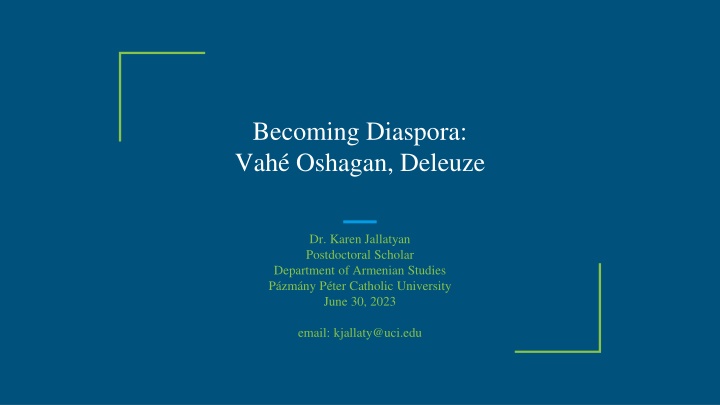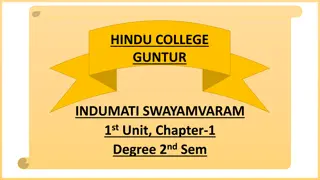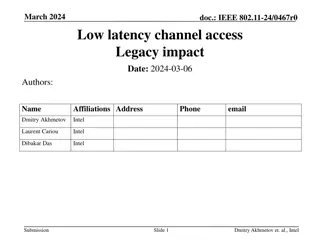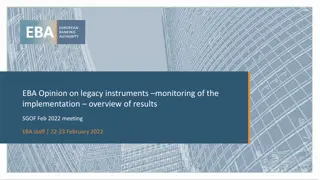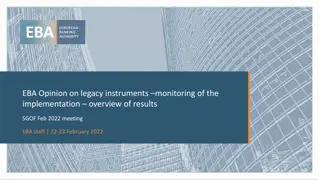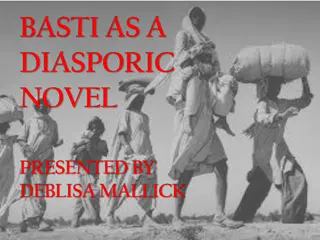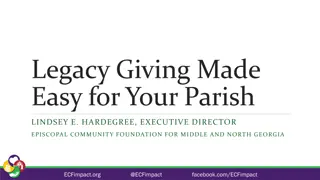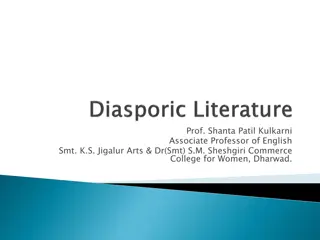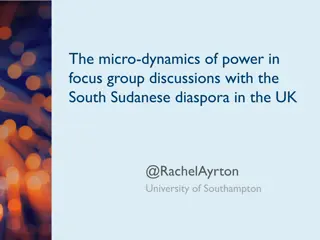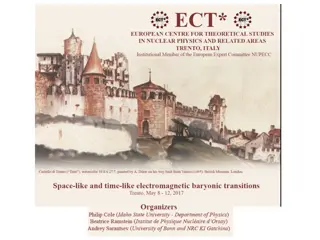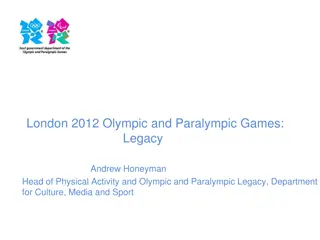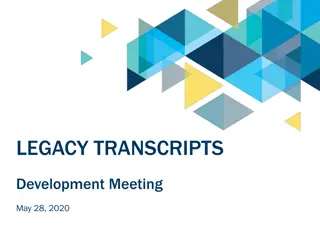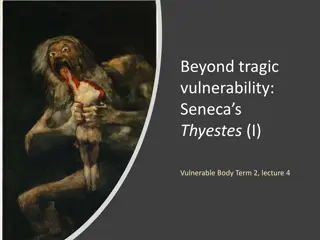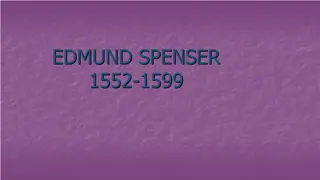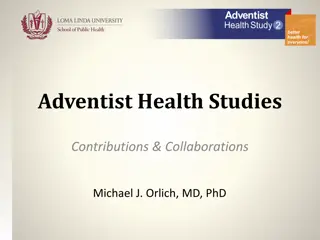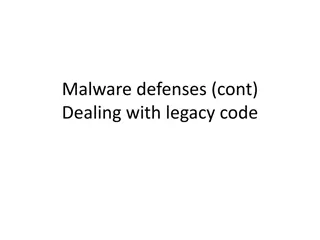Exploring the Works and Legacy of Vah Oshagan in Diaspora Studies
Delve into the profound impact of Vah Oshagan's writings on Armenian Diaspora Studies, examining themes of relationality, post-catastrophic diaspora, and diasporic becoming. Discover Oshagan's thought-provoking insights on identity, memory, and humanity, as reflected in his literary contributions and critical perspectives.
Download Presentation

Please find below an Image/Link to download the presentation.
The content on the website is provided AS IS for your information and personal use only. It may not be sold, licensed, or shared on other websites without obtaining consent from the author.If you encounter any issues during the download, it is possible that the publisher has removed the file from their server.
You are allowed to download the files provided on this website for personal or commercial use, subject to the condition that they are used lawfully. All files are the property of their respective owners.
The content on the website is provided AS IS for your information and personal use only. It may not be sold, licensed, or shared on other websites without obtaining consent from the author.
E N D
Presentation Transcript
Becoming Diaspora: Vah Oshagan, Deleuze Dr. Karen Jallatyan Postdoctoral Scholar Department of Armenian Studies P zm ny P ter Catholic University June 30, 2023 email: kjallaty@uci.edu
I. Vah Oshagan (1922-2000): Introduction II. The Reception of Oshagan Work III. Armenian Diaspora Studies Overview IV. Deleuzian Relationality V. Post-Catastrophic Diaspora VI. Post-Catastrophic Diasporic Becoming VII. References
The road from Beirut to Paris does not pass through Armenia through the rotten and clammy longing for Armenia but cuts across the grand highway of world s struggles , of dry-eyed and callous [dry-nerved], evil impatient and irritated humanity.
The road from Beirut to Paris does not pass through Armenia through the rotten and clammy longing for Armenia but cuts across the grand highway of world s struggles , of dry-eyed and callous [dry-nerved], evil impatient and irritated humanity. , , , , 1971, . Vah Oshagan, "Beirut Paris," in K arughi (Crossroad), Beirut, 1971, no pagination.
In Beirut [and] Paris you are destroyed every minute by your pleasure get lost from the world already , if you have no gift to give to humanity, let your memory die too , , if you are going to live only with it, if having gotten used to yourself you are going to play brother and sister under the whorehouse's wall, if all you know is clapping when the world is disturbed no longer able to clap. Clap clap clap clap clap . , , , , 1971, . Vah Oshagan, "Beirut Paris," in K arughi (Crossroad), Beirut, 1971, no pagination.
I. Vah Oshagan (1922-2000) Selected Bibliography (Window), Beirut, 1956. (City), Beirut, 1963. (Crossroads), Beirut, 1971. (Alert), Philadelphia, 1980. (Panic), New York, 1983 (The Fugitive), Antelias, Lebanon, 1987. Prose. (Around the Trap), New York, 1988. Prose. (Suburbs), Los Angeles, 1991. (Generations), Beirut, 1995. Prose. (The Inoculation), Haratch, Paris, 1995. Novel. (Identity). Antelias, Lebanon, 1996. Prose. (Embrace), Sydney, Australia, 1996. Prose. (The Traveler), Los Angeles, 2006. Poetry. (posthumously) Literary criticism in diaspora press and periodicals: Pakin ( ), Beirut, co-editor. Ahegan ( ), Beirut. Young Armenian ( ), Beirut. Haratch ( ), Paris. Asbarez ( ), Los Angeles, contributor of the weekly Literary Chronicles column. RAFT: A Journal of Armenian Poetry and Criticism, 1987-1999, editor-in-chief Wikipedia
The City: An Epic, Volume 1 (. , ), Beirut, 1963 The cover of The City, both sides. Title page of The City.
The city that gathers thousands of people but does not equal to one man s one room s one unpostponable and erroneous yearning. , , , 1963, 25 Vah Oshagan, City (Kaghaq), Beirut, 1963, p. 25.
II. The Reception of Oshagan's Work: Modernizing, Existentialist Marc Nichanian, Whispers from Vah Oshagan. Hasg Armenological Annals, vol. 6, 1995, 137- 162, and elsewhere: - desanctifying gestures - exposing the ways in which meaninglessness is covered Krikor Beledian: Absence as the source of absurd inscribed: Whatever there is is the duplicate or the illusion of the man, his fake appearance. Things are not what they seem; the world, the universe carry in their center a general, unapproachable absence. Over it come and move all the shadows and entities. They become masks that cover that absence, occasions for conscience to ignore or deny it. (158, 165) Vah Oshagan and the Contemporary Poetry, Flock, Sargis Khachents-PrintInfo, Beirut- Yerevan, 2015, 153-169.
III. Armenian Diaspora Studies: The State of the Art Gerard Libaridian: Marx, Gramsci, Foucault Khachig T l lyan: discourse analysis Janine Altounian: psychoanalysis Krikor Beledian: discourse analysis, post-structuralist Marc Nichanian: discourse analysis, post-structuralist, deconstructionist historicizations Marie-Aude Baronian: neo-materialist tendencies
Interlude A secret light sparkles under the skin of every object twinkles and throbs from the tiny heart of every word barely born and already naked hairless little atoms all around and inside me while oriental strip-teasers gone wild as the veils begin to fall until I reach the hide-out beyond the word is an immense flea-market of what will never be born but still waiting pleading with the jab of hidden light from the instant. Oh let it come or shine or glitter just once let it touch the mindless anchors that hold the network of consciousness sunk in the mire in the snare of the crowds suffocating crammed in Calcutta s Black hole but spreading out to all the rooms of outer space filled up and they all sing and weep for love and war from death to birth all things tumbling panic-stricken man and insect plant and rock. - Embrace ( , Hampuyr), 1996, Momjian publication, Sydney, no pagination. RAFT Volume 10, 1996, 48-50.
Oh what pele-mele confusion of one immense and magnetic crystal prism that captures life is an eye from its own stare hypnotised it is a song gone mad from its own magical charm it is a huge talisman hung from the neck of desolation or of the being to protect from evil eyes Whatever was there from the start before the light came through the stage door into the prompter s pit his croaky voice whispering our lines and winding granddad s golden watch as the minutes tick and turn to gangsters robbing something out there with such pleasure mumbling a song and vanishing like all those words enshrouding me and wrapping me in barbed-wire. Embrace ( , Hampuyr), 1996, Momjian publication, Sydney, no pagination. RAFT Volume 10, 1996, 48-50.
But I know well the heavy walls around Chernobyl are illusions like hideous mirages that scintillate on horizon s edge from where they call me to join the feast along those roads that wend to me by the thousand and hold my hand and implore me to stay with them this is what love is all about the only love that holds my tiny body of teen-ager with her powerful boundless arms of house-keeper in the kitchen of the orphanage and her lovesick embrace pressing me maybe to strangle me or to protect from the dragons of dereliction and wasteland and the mad feast in the middle of the storm where the aging worn-out teacher at the table in the evening s balcony nibbles his dishes of longings and dreams violated. Oh human crumbs we will float on liquid silence and mighty roots will plunge beyond the pain of being human to reach and try to touch the infinite kingdom of beauty beyond reach of virgin motherhood of female nakedness colossal body of absurd vicious and sinless sprawled in the dark calling me. Embrace ( , Hampuyr), 1996, Momjian publication, Sydney, no pagination. RAFT Volume 10, 1996, 48-50.
IV. Deleuzian Relationality I: Difference Unsubordinated to Identity with Guattari: Bergsonism (1966) - virtuality, actuality Difference and Repetition (1968) - multiplicity - assemblages - intensities (pre-signifying) "The reality of the virtual consists of the differential elements and relations along with the singular points which correspond to them. The reality of the virtual is structure. We must avoid giving the elements and relations which form a structure an actuality which they do not have, and withdrawing from them a reality which they have. We have seen that a double process of reciprocal determination and complete determination defined that reality: far from being undetermined, the virtual is completely determined." (209) Anti-Oedipus (1972/1977) Kafka: Toward a Minor Literature (1975/1986) - highly deterritorializing - collective - political A Thousand Plateaus (1980/1987) - Apparatus of Capture (chapter 3) - language and multiplicity (chapter 4)
IV. Deleuzian Relationality II Karen Barad, Meeting the Universe Halfway: Quantum Physics and the Entanglement of Matter and Meaning (Duke University Press, 2007) - diffractive materiality Rosi Braidotti, Embodiment and Sexual Difference in Contemporary Feminist Theory (Columbia University Press, 2011) Manuel DeLanda, Assemblage Theory (Edinburgh University Press, 2016) - relations of exteriority and interiority - coding, overcoding, decoding
V. Post-Catastrophic Diaspora I: Survival Language (Marc Nichanian) - In "Le souverain, le survivant, le dernier homme" (The Sovereign, the Survivor, and the Last Man), Nichanian criticizes Deleuze and Guattari's minor literature/major language binary as giving a "testimonial dimension" to literature. - Nichanian's concept of "survival language" as pointing to the law/limit (sahman - in Armenian) of sovereign language, exposed by a post-catastrophic survival language: There was sahman as the invisible limit that separates and unites sovereign languages between them, that regulates their coexistence. There was sahman as the law itself that ensures this peaceful coexistence and that determines the regime of foreignness between languages that are henceforth sovereign (not too much foreignness for all that, it is rather necessary to recognize each other). But now there is sahman as the end, the supposed end of sovereignty, since it is from there that Bucephalus (with his solemn step of translator on the stairs of the palace and his genealogical gaze, in the evening, by the light of the lamp) restores its fundamental historicity to sovereignty. The three together, these three meanings of the word sahman the limit, the law, the end constitute the domain of the trial [ preuve] and experience of translation. But the third meaning of sahman is accessible only to Bucephalus, since he is the inhabitant of the survivor language. (21)
V. Post-Catastrophic Diaspora II: Survival Language, Translation (Marc Nichanian) - In Image, Story, History, Volume 2, Competitions ( , , . 2. ) (Yerevan: Hovhannisyan Institute, Aktual Arvest, 2016), Nichanian argues: It is by the translatability [which, Nichanian explains, Derrida, by way of Benjamin, calls traductibilit , as the call to be translated at the core of a literary work already theorized by the German Romantics with the notion of potentiality - K.J.] of the literary work that a language experiences itself as survivor. And that experience is in the literary work itself, before any actual translation. This is how a language experiences in itself its own loss, with an experience that is completely without subject. (532, my translation)
VI. Post-Catastrophic Diasporic Becoming I: Deleuze, Derrida And yet, Deleuze and Guattari do not necessarily rely on testimonialization: It then becomes clear that the statement is individuated, and enunciation subjectified, only to the extent that an impersonal collective assemblage requires it and determines it to be so. It is for this reason that indirect discourse, especially "free" indirect discourse, is of exemplary value: there are no clear, distinctive contours; what comes first is not an insertion of variously individuated statements, or an interlocking of different subjects of enunciation, but a collective assemblage resulting in the determination of relative subjectification proceedings, or assignations of individuality and their shifting distributions within discourse. (80, A Thousand Plateaus, emphases by the authors) - Post-Catastrophic temporality: Nachtr glichkeit (Afterwardness) - How can such a post-structural understanding of post-catastrophic emergence square with Deleuzian thought of the im/possible as actualizable virtualities? - Pre-signifying processes: Gabriele Schwab, "I Introduction Derrida, Deleuze and the Psychoanalysis to Come" in Derrida, Deleuze, Psychoanalysis (Columbia University Press, 2007, 1-34): Derrida's concern with the inarticulate cry further calls for a concept of writing that includes animality and madness and, more generally, primordiality, or what Deleuze calls the "presignifying semiotic," which he describes as "much closer to 'natural' codings operating without signs. (2, footnote 2: Deleuze and Guattari, A Thousand Plateaus, 117)
VI. Post-Catastrophic Diasporic Becoming II: Diasporizing Deleuze -Vah Oshagan translating Vah Oshagan - obfuscations, mitigations, erasures in translating from a survival language to a sovereign language -Towards A Discursive-Material Diasporic Archive - affective spectrality - post-catastrophic chronotopes - diasporic becoming as emergent
VII. References I Janine Altounian, La Survivance : Traduire le trauma collectif, Dunod, 2000. , L intraduisible. Deuil, m moire, transmission, Dunod, 2005. , L' criture de Freud : Travers e traumatique et traduction, Presses universitaires de France, 2003. , M moires du g nocide arm nien: H ritage traumatique et travail analytique, Presses Universitaires de France, 2009. Marie-Aude Baronian, "Weaving Images: Textile, Displacement, and Reframing the Borders of Visual Culture," in An Armenian Mediterranean: Words and Worlds in Motion. edited by Kathryn Babayan and Michael Pifer, Palgrave Macmillan, 2018, 207-219. Krikor Beledian, Vah Oshagan and the Contemporary Poetry, Flock, Sargis Khachents-PrintInfo, Beirut-Yerevan, 2015, 153-169. , "Consid rations sur les conditions de possibilit d'une po sie diasporique," (Thoughts on the Conditions of Possibility of Diasporic Poetry) in La struttura negata: Cultura Armena Nella Diaspora 1 (29/30 June-1 July, 1978), edited by Marc Nichanian, Remo Pomponio, ICOM, Milan, 1979, 77-82. Karen Barad, Meeting the Universe Halfway: Quantum Physics and the Entanglement of Matter and Meaning, Duke University Press, 2007.
VII. References II Rosi Braidotti, Embodiment and Sexual Difference in Contemporary Feminist Theory, Columbia University Press, 2011. Manuel DeLanda, Assemblage Theory, Edinburgh University Press, 2016. Gilles Deleuze, Bergsonism (1966), translated by Hugh Tomlinson and Barbara Habberjam, Zone Books, New York, 1991. , Difference and Repetition (1968), translated by Paul Patton, Columbia University Press, New York, 1994. , The Logic of Sense (1969), translated by Mark Lester with Charles Stivale, edited by Constantin V. Boundas, The Athlone Press, London, 1990. Gilles Deleuze and F lix Guattari, Anti-Oedipus: Capitalism and Schizophrenia I (1972), translated by Robert Hurley, Mark Seem, and Helen R. Lane, preface by Michel Foucault, University of Minnesota Press, Minneapolis, London, 1983. , Kafka: Towards a Minor Literature (1975), translation by Dana Poplan, foreword by R da Bensma a, University of Minnesota Press, Minneapolis, London, 1986 , A Thousand Plateaus: Capitalism and Schizophrenia II (1980), translation and foreword by Brian Massumi, University of Minnesota Press, Minneapolis, London, 1987. Gerard Libaridian, "Diaspora: Process and Program," in La struttura negata: Cultura Armena Nella Diaspora 1 (29/30 June-1 July, 1978), edited by Marc Nichanian, Remo Pomponio, ICOM, Milan, 1979, 32-36.
VII. References III Marc Nichanian, "Le souverain, le survivant, le dernier homme" (The Sovereign, the Survivor, and the Last Man) , Whispers from Vah Oshagan. Hasg Armenological Annals, vol. 6, 1995, 137-162 Vah Oshagan, "Interlude," ( ), Embrace ( , Hampuyr), 1996, Momjian publication, Sydney, no pagination. , "Interlude," RAFT: A Journal of Armenian Poetry and Criticism, eds. Vah Oshagan and John A.C. Greppin, Volume 10, 1996, 48-50. Gabriele Schwab, "I Introduction Derrida, Deleuze and Psychoanalysis to Come," in Derrida, Deleuze, Psychoanalysis, edited by Gabriele Schwab, Columbia University Press, 2007, 1-34. Khachig T l lyan, 'The Nation-State and Its Others: In Lieu of Preface', in Diaspora: A Journal of Transnational Studies 1, no. 1, (Spring): 3-7, 1991. , 'Rethinking Diaspora(s): Stateless Power in the Transnational Moment', in Diaspora: A Journal of Transnational Studies 5, no. 1 (Spring): 3-36, 1996 Project MUSE. , "Elites and Institutions in the Armenian Transnation," Diaspora: A Journal of Transnational Studies 9, no. 1 (Spring), 107-136, 2000. , "Beyond the Homeland: From Exilic Nationalism to Diasporic Transnationalism," in The Call of the Homeland: Diaspora Nationalisms Past and Present, Brill, Leiden, The Netherlands, 2007, 27-45.
Thank you. Dr. Karen Jallatyan Postdoctoral Scholar Department of Armenian Studies P zm ny P ter Catholic University June 30, 2023 email: kjallaty@uci.edu
